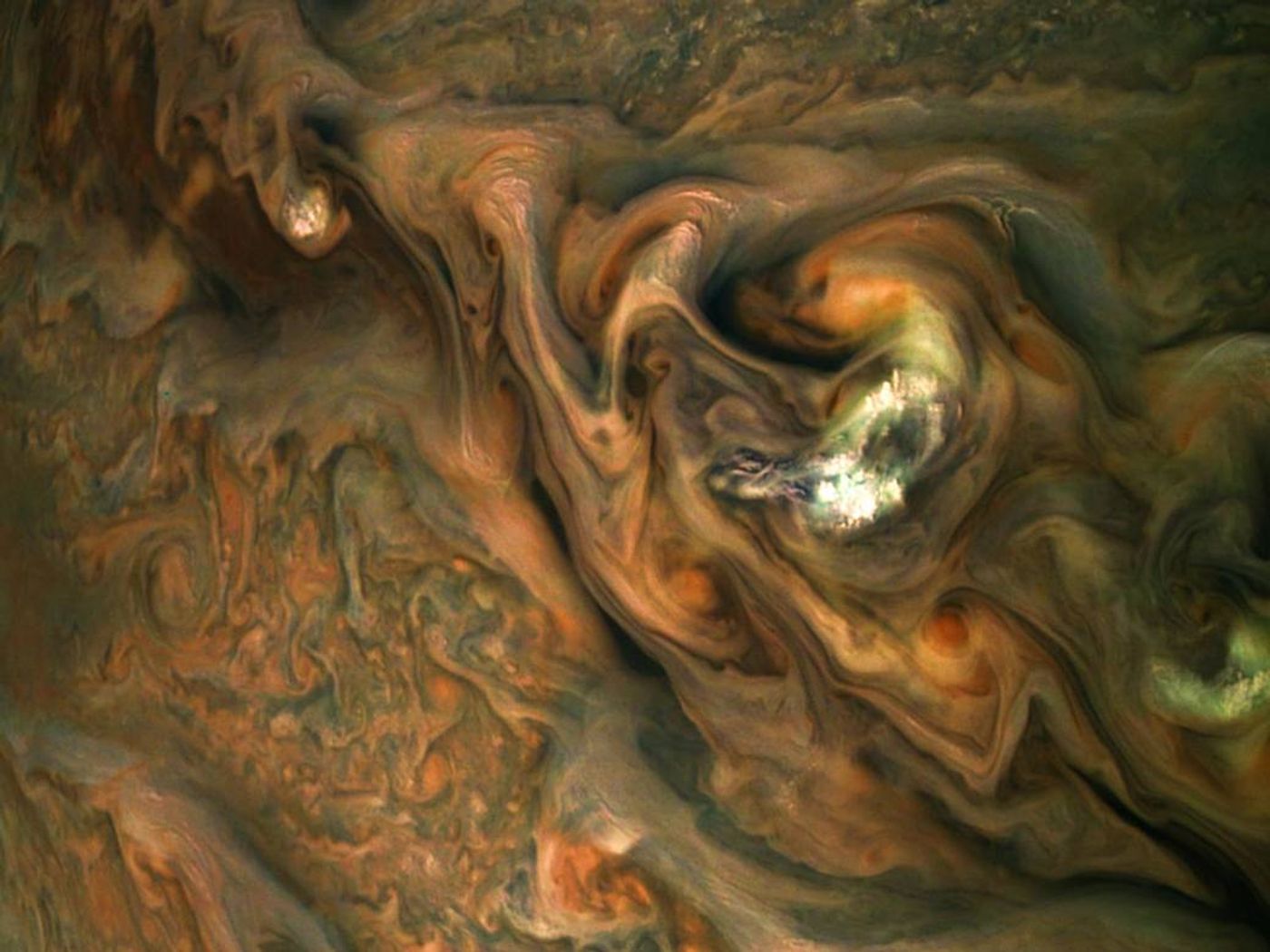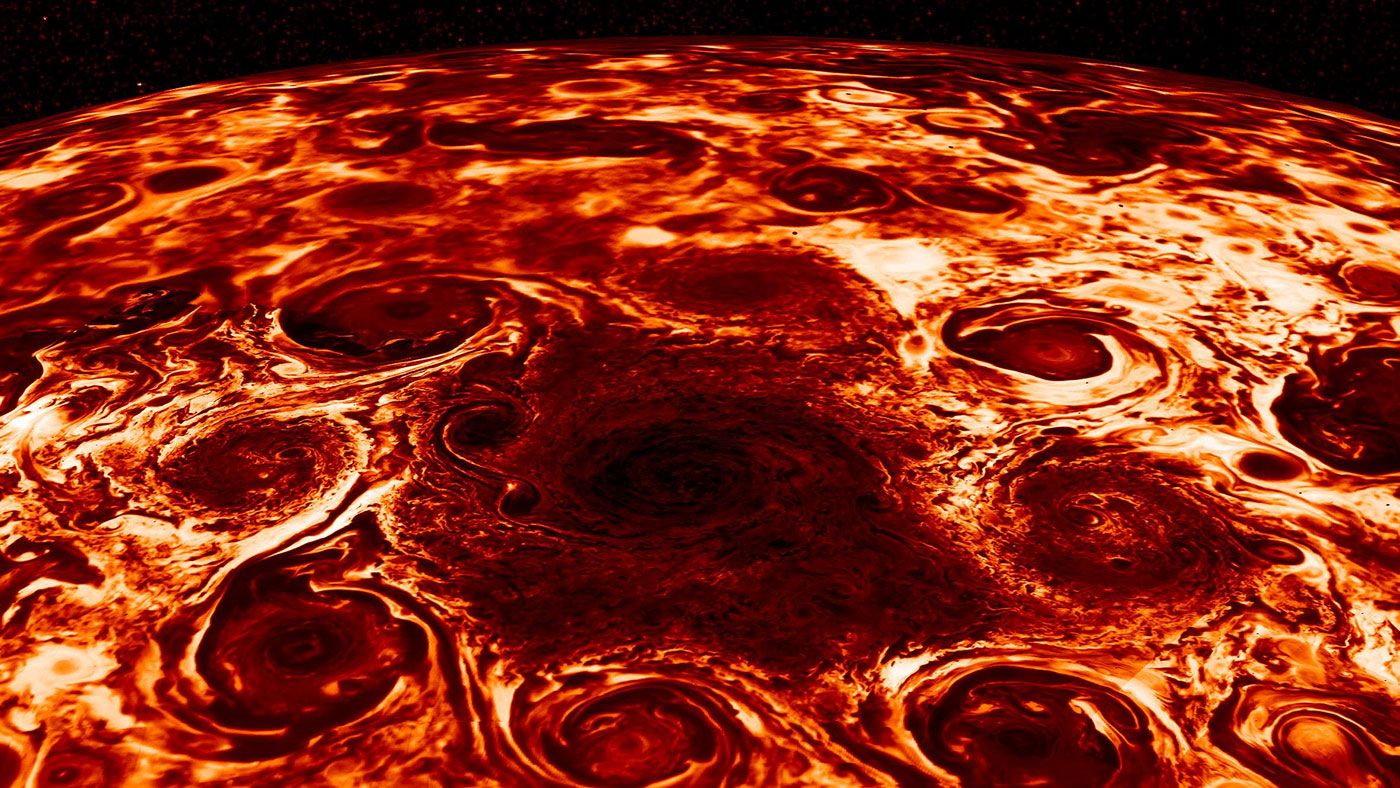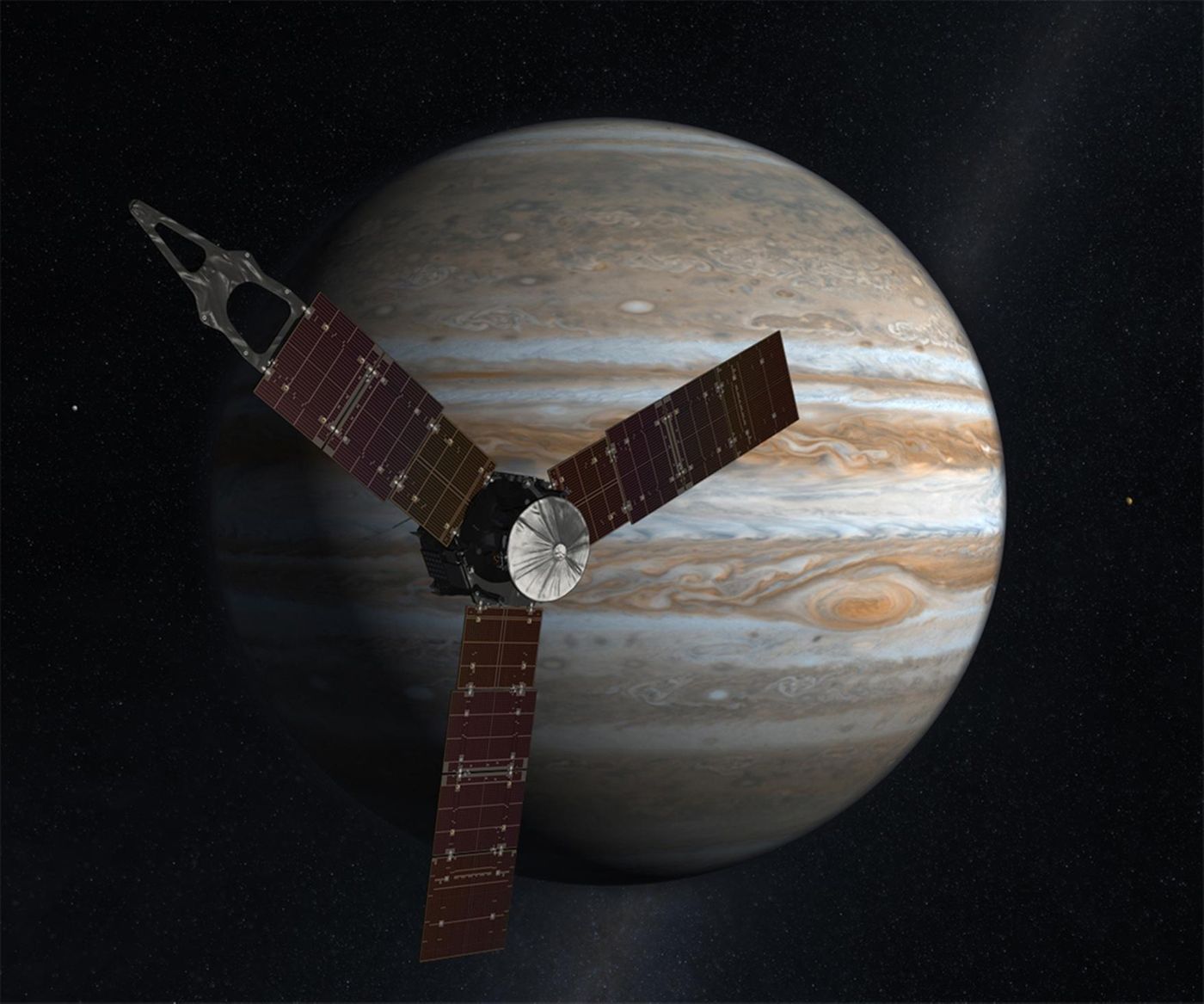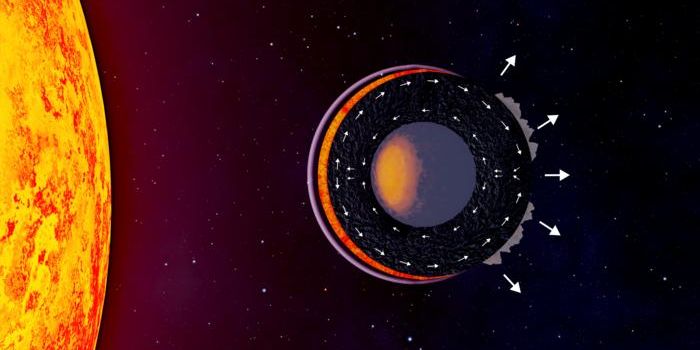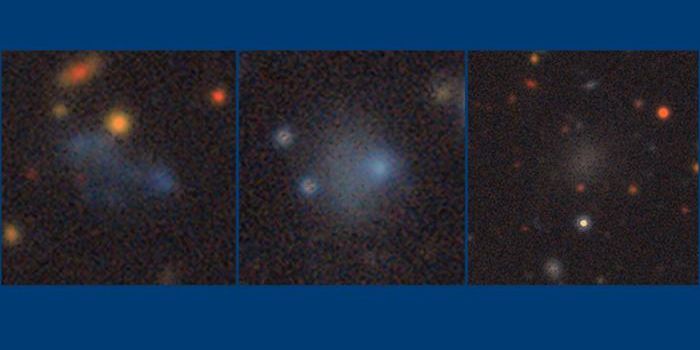Earth Ocean Physics and Jupiter Cyclones
Arriving at Jupiter in 2016, the NASA-funded Juno spacecraft has been beaming back the most detailed and jaw-dropping images of the solar system’s largest planet. These images and data have helped revise earlier theories on Jupiter’s lightning and gave us the first views of Jupiter’s poles, revealing numerous cyclones. These cyclones continue to be observed all over the giant planet, but how do these processes occur, and how can they best be explained?
A recent study published in Nature Physics helps describe the lavish turbulence at Jupiter’s poles and the physical forces that drive these large cyclones. This study provides evidence for a longtime hypothesis that moist convection—when hotter, less dense air arises—drives these cyclones.
“When I saw the richness of the turbulence around the Jovian cyclones with all the filaments and smaller eddies, it reminded me of the turbulence you see in the ocean around eddies,” said Dr. Lia Siegelman, lead author of the study who is a physical oceanographer and postdoctoral scholar at the Scripps Institution of Oceanography at the University of California, San Diego. “These are especially evident on high-resolution satellite images of plankton blooms for example.”
Dr. Siegelman decided to pursue this study after observing that the cyclones at Jupiter’s poles shared similarities with ocean vortices she studied during her time as a PhD student. The research team analyzed an array of infrared images taken at Jupiter’s north pole region, in particular the polar vortex cluster, where a large central cyclone is encircled by eight smaller cyclones. The team was able to calculate both wind speed and direction by successfully tracking the movements of the clouds between images. The team then successfully interpreted the infrared images in terms of cloud thickness, determining the hot regions correspond to thin clouds, where it is possible to see deeper into Jupiter’s atmosphere. Cold regions represent thick cloud cover, blanketing Jupiter’s atmosphere.
These incredible findings gave researchers clues on the energy of the system, with similar behavior patterns as ocean vortices. Much like the latter, the Jovian clouds form when hotter, less dense air rises, and this rapidly rising air within the clouds acts as an energy source that ultimately feeds larger scales of clouds up to the large circumpolar and polar cyclones.
Juno Mission
The Juno mission is managed out of NASA’s Jet Propulsion Laboratory in Pasadena, CA, with the principal investigator being Dr. Scott Bolton of the Southwest Research Institute in San Antonio, TX. Juno is currently in its extended mission, with its primary mission officially completed in July 2021. This extended mission is scheduled to last until September 2025, or until the spacecraft’s end of life.
Sources: Nature, NASA Solar System Exploration, Nature Physics, Juno Overview
